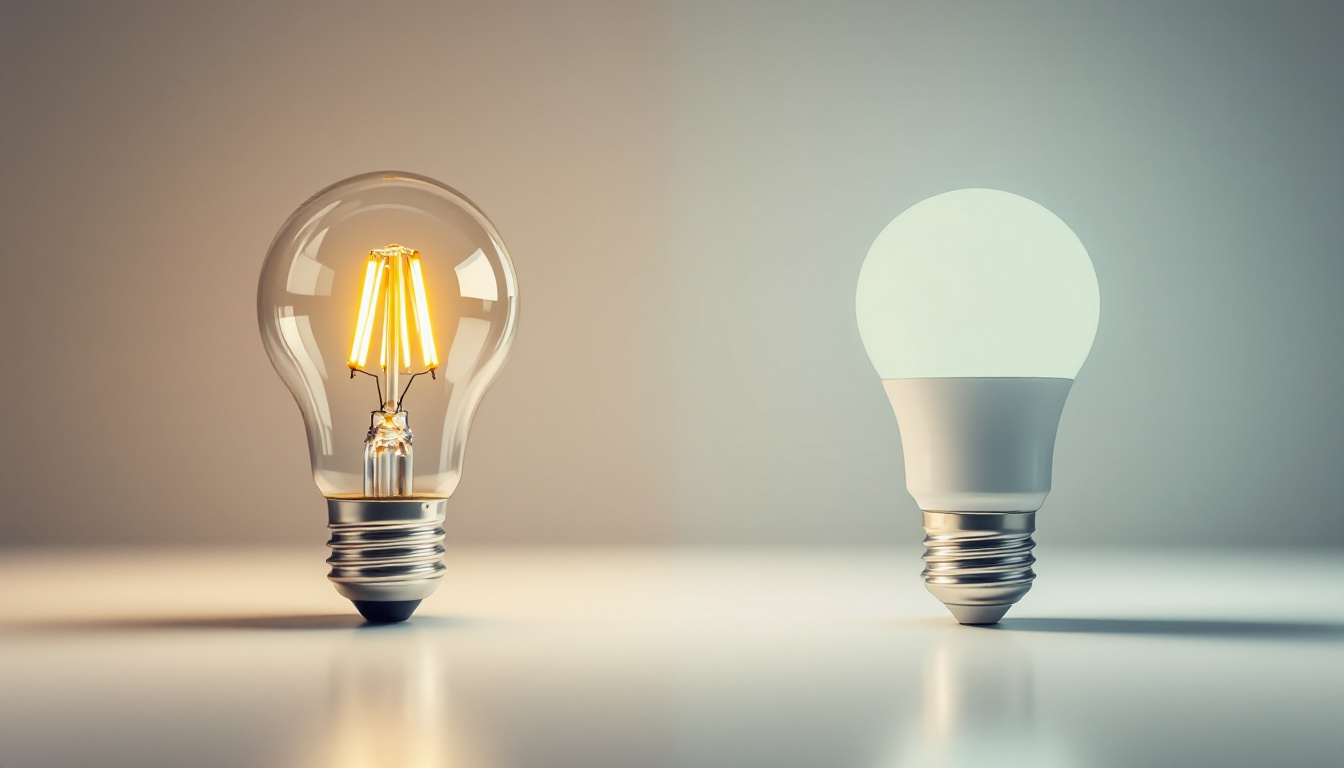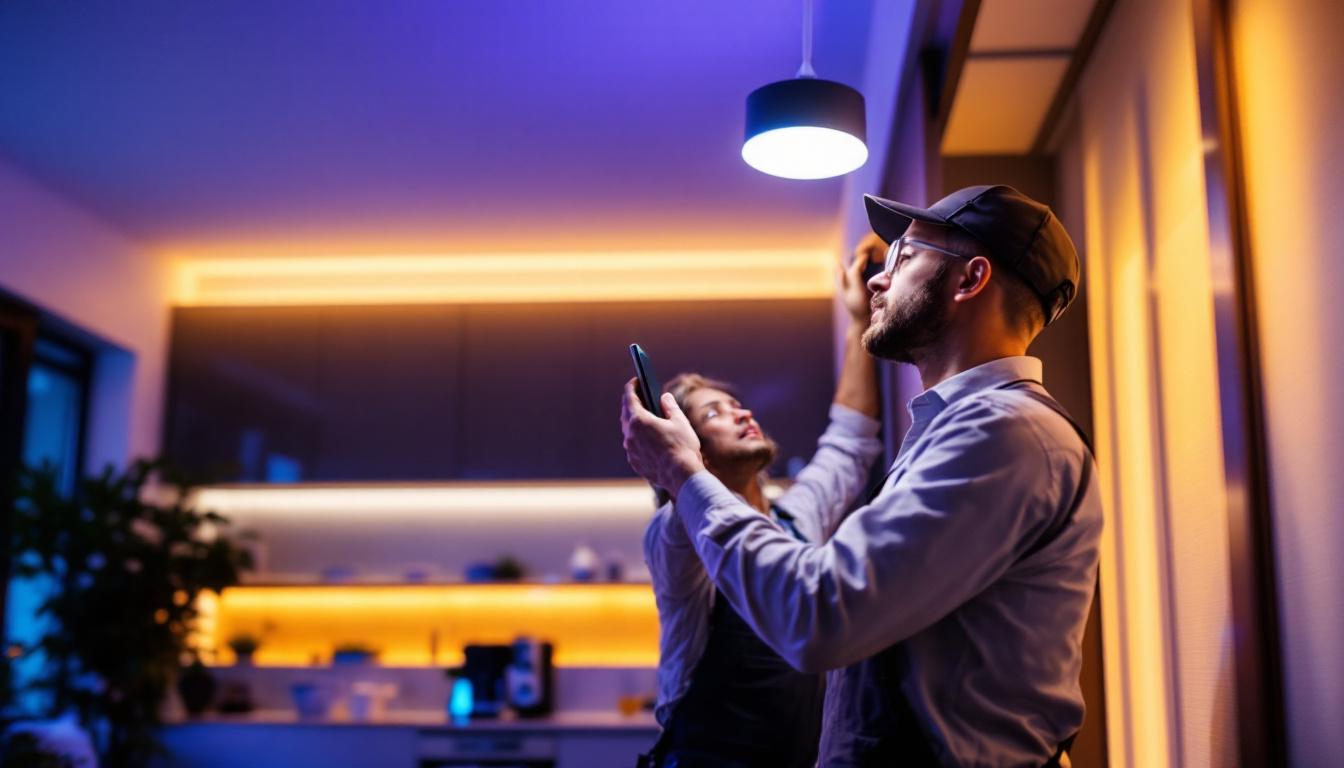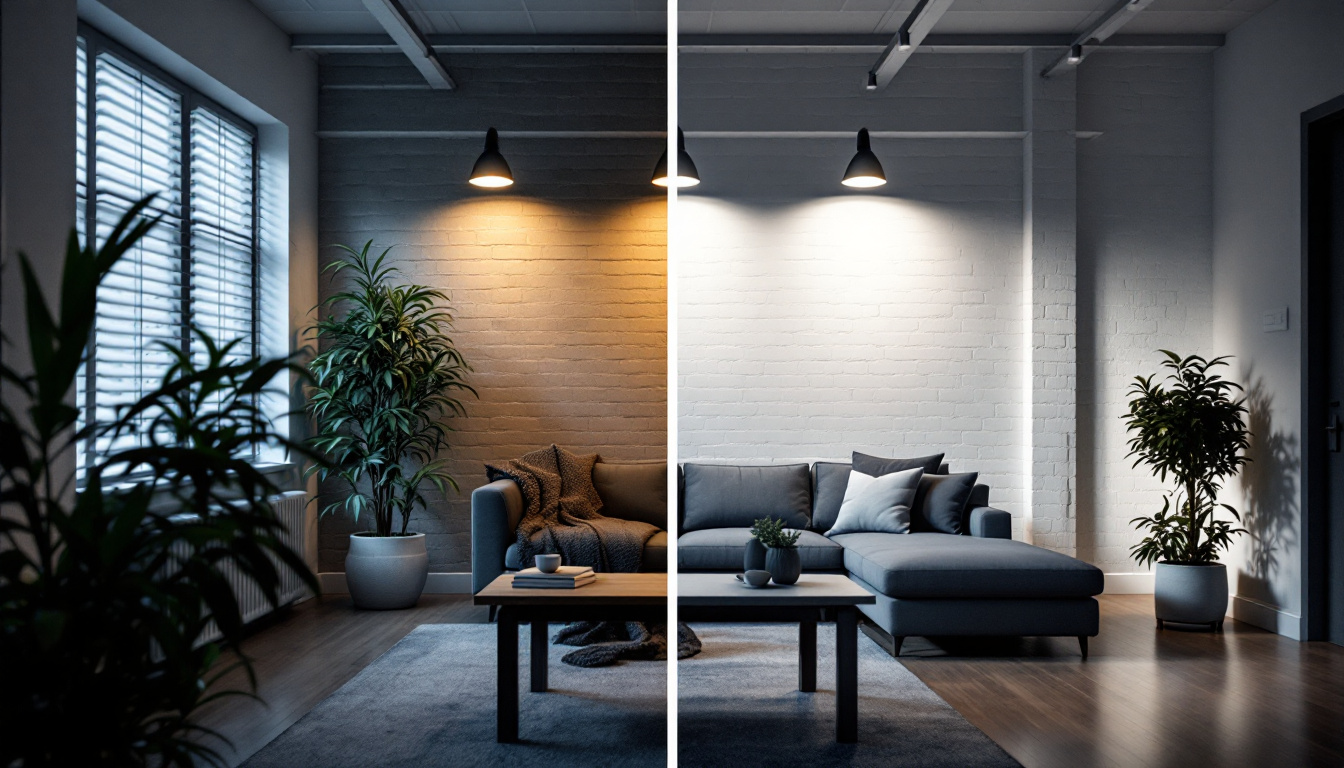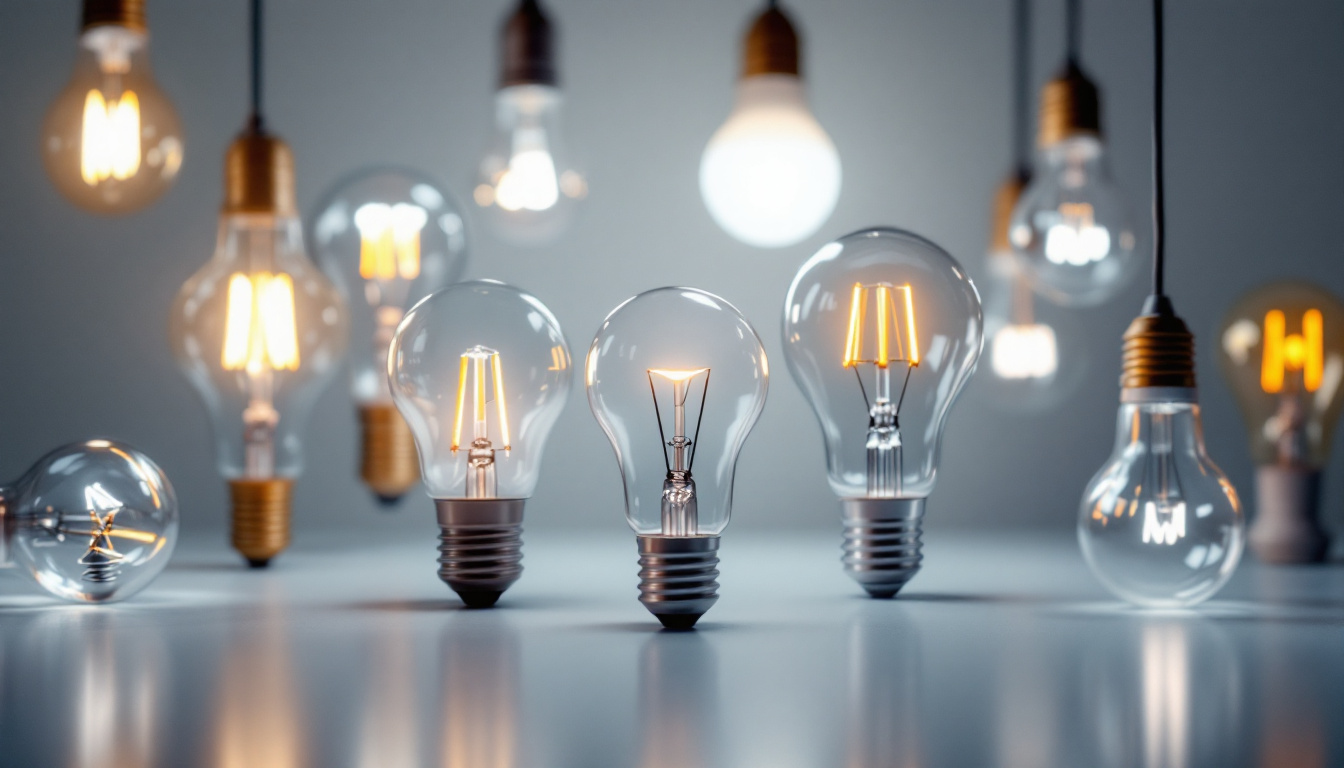
In the quest for energy efficiency and sustainability, the transition from T12 fluorescent lighting to LED technology has become a significant topic for lighting contractors. This conversion not only reduces energy consumption but also enhances the quality of light in various settings. Understanding the nuances of this transition is essential for contractors looking to provide their clients with the best solutions available.
Energy efficiency is more than just a buzzword; it is a crucial component of modern lighting design. As businesses and homeowners alike seek to reduce their carbon footprint, the demand for energy-efficient lighting solutions has surged. T12 fluorescent bulbs, while once a standard choice, are now being overshadowed by the superior benefits of LED technology.
T12 fluorescent bulbs are characterized by their larger diameter, typically 1.5 inches. They have been widely used in commercial and industrial settings for decades. However, they are known for their inefficiencies, including higher energy consumption and shorter lifespans compared to newer technologies. The ballast required for T12 bulbs also contributes to energy waste, making them less appealing in today’s eco-conscious market. Additionally, T12 bulbs can emit a flickering light, which may lead to discomfort and reduced productivity in workplace environments. As regulations tighten and energy efficiency standards evolve, many organizations are now faced with the challenge of upgrading their lighting systems to meet these new requirements.
LED (Light Emitting Diode) technology has revolutionized the lighting industry. LEDs are compact, durable, and highly efficient, consuming significantly less energy than traditional fluorescent bulbs. With a lifespan that can exceed 25,000 hours, LEDs offer a long-term solution that reduces maintenance costs and downtime. Moreover, they provide instant illumination without the warm-up time associated with fluorescent lighting. The versatility of LEDs also allows for a wide range of applications, from residential spaces to intricate architectural designs, enabling creative lighting solutions that enhance aesthetics while promoting energy savings. Furthermore, advancements in smart lighting technology have integrated LEDs with IoT capabilities, allowing users to control their lighting remotely, set schedules, and even adjust brightness levels, further optimizing energy use and enhancing convenience in everyday life.
The conversion from T12 fluorescent to LED lighting brings a multitude of benefits that can enhance both the functionality and aesthetic appeal of a space. For lighting contractors, understanding these advantages is key to convincing clients to make the switch.
One of the most compelling reasons to convert to LED is the potential for significant cost savings. LEDs consume up to 75% less energy than T12 fluorescent bulbs, leading to lower electricity bills. Additionally, the long lifespan of LEDs means that replacement costs are minimized, providing further financial relief over time. This longevity can often exceed 25,000 hours, compared to the 1,000 hours typical of T12 fluorescents, which means less frequent replacements and reduced labor costs associated with maintenance. Moreover, many utility companies offer rebates and incentives for businesses that make the switch to energy-efficient lighting, further enhancing the financial benefits of this transition.
LEDs offer superior light quality compared to T12 fluorescents. They provide a more consistent and vibrant light output, which can enhance the appearance of spaces and improve visibility. Furthermore, LEDs are available in a variety of color temperatures, allowing contractors to tailor the lighting to the specific needs of their clients. This flexibility enables the creation of different atmospheres, from warm, inviting tones in residential settings to bright, energizing light in commercial environments. Additionally, LEDs are less prone to flickering and buzzing, common issues associated with fluorescent lighting, which can contribute to a more comfortable and productive environment for occupants.
Another significant benefit of converting to LED lighting is its positive impact on the environment. LEDs are free from toxic materials such as mercury, which is commonly found in fluorescent bulbs, making them a safer choice for both users and the planet. The reduced energy consumption of LEDs not only leads to lower carbon emissions but also decreases the demand for fossil fuels, contributing to a more sustainable future. Furthermore, the longer lifespan of LEDs means fewer bulbs end up in landfills, which is a critical consideration in today’s eco-conscious society. By choosing LED lighting, clients can take pride in making a responsible choice that aligns with environmental stewardship.
For lighting contractors, understanding the conversion process from T12 to LED is crucial. This involves several steps, from assessing the existing lighting system to selecting the appropriate LED products.
The first step in the conversion process is to assess the current lighting system. This includes evaluating the number of fixtures, the type of ballast in use, and the overall condition of the existing lighting. Understanding these factors will help determine the best approach for the conversion and ensure that the new LED system meets the client’s needs.
Once the assessment is complete, the next step is to select the right LED products. Contractors should consider factors such as lumen output, color temperature, and compatibility with existing fixtures. Many manufacturers offer LED retrofit kits specifically designed to replace T12 fluorescent bulbs, making the transition smoother and more efficient.
Installation is a critical phase of the conversion process. Depending on the existing fixtures and ballasts, contractors may need to bypass or replace the ballast to ensure compatibility with the new LED bulbs. It is essential to follow the manufacturer’s guidelines during installation to guarantee optimal performance and safety.
While the conversion from T12 fluorescent to LED is beneficial, it is not without its challenges. Being aware of these potential issues can help contractors navigate the process more effectively.
One of the most common challenges in converting T12 to LED is ballast compatibility. Some LED bulbs are designed to work with existing ballasts, while others require a direct wire installation, bypassing the ballast entirely. Contractors should carefully evaluate the existing system to determine the most appropriate solution.
Another challenge is ensuring that the light output of the new LEDs meets the expectations of the client. It is crucial to calculate the required lumens for the space and select LED products that provide adequate illumination. Utilizing photometric data can assist in making informed decisions about the best products for each application.
The environmental benefits of converting to LED lighting cannot be overstated. This transition plays a significant role in reducing energy consumption and greenhouse gas emissions.
By switching to LED technology, businesses and homeowners can significantly reduce their carbon footprint. LEDs consume less energy, which translates to lower emissions from power plants. This is particularly important as society moves toward more sustainable practices and seeks to combat climate change.
In addition to energy savings, converting to LED also contributes to waste reduction. T12 fluorescent bulbs contain hazardous materials, such as mercury, which require special disposal methods. LEDs, on the other hand, are free from these harmful substances, making them a safer choice for the environment.
Examining successful case studies can provide valuable insights into the benefits and challenges of T12 to LED conversions. These examples can serve as a guide for contractors looking to implement similar projects.
In a recent project involving a commercial office space, a lighting contractor successfully converted the existing T12 fluorescent lighting to LED. The result was a dramatic reduction in energy costs, with the client reporting savings of over 60% on their monthly electricity bill. Additionally, the improved light quality enhanced employee productivity and satisfaction.
Another notable case involved a retail store that transitioned from T12 fluorescents to LED lighting. The store experienced not only significant cost savings but also an increase in foot traffic due to the enhanced visual appeal of the merchandise. The vibrant, consistent lighting created an inviting atmosphere that attracted more customers.
As technology continues to evolve, the lighting industry is poised for further advancements. Staying informed about these trends can help contractors remain competitive and provide cutting-edge solutions to their clients.
One of the most exciting trends in lighting technology is the rise of smart lighting solutions. These systems allow for greater control over lighting environments, enabling users to adjust brightness, color temperature, and even scheduling through smartphone applications. Integrating smart technology with LED lighting can enhance energy efficiency and user experience.
As the push for renewable energy sources grows, the integration of LED lighting with solar power systems is becoming more prevalent. This combination not only maximizes energy efficiency but also promotes sustainability. Contractors should consider how these systems can be incorporated into their lighting designs to meet the evolving demands of clients.
The conversion from T12 fluorescent to LED lighting represents a significant opportunity for lighting contractors. By understanding the benefits, challenges, and processes involved, contractors can effectively guide their clients toward more energy-efficient solutions. As the industry continues to evolve, embracing these changes will not only benefit businesses and homeowners but also contribute to a more sustainable future.
In conclusion, the shift to LED technology is not just a trend; it is a necessary step toward achieving energy efficiency and environmental responsibility. Contractors who stay informed and adapt to these changes will position themselves as leaders in the lighting industry, ready to meet the demands of a changing market.
Ready to lead the charge in energy-efficient lighting solutions? At LumenWholesale, we provide lighting contractors with the highest quality, spec-grade LED products at unbeatable wholesale prices. Say goodbye to local distributor markups and hello to a vast selection of reliable lighting that meets rigorous industry standards. With free shipping on bulk orders, you can stock up on premium lighting without any hidden fees. Make the smart switch to LED with LumenWholesale and enjoy the perfect combination of quality, affordability, and convenience. Take the first step towards a brighter, more sustainable future by visiting Wholesale Lighting at the Best Value today.

Discover essential tips and insights for lighting contractors on effectively utilizing Uvo Light technology.

Discover effective strategies for training your team in outdoor lighting with our comprehensive guide on post lamps.

Discover the transformative benefits of LED can light conversion kits in modern lighting installations.

Discover the key terminology every lighting professional should know with our essential checklist.